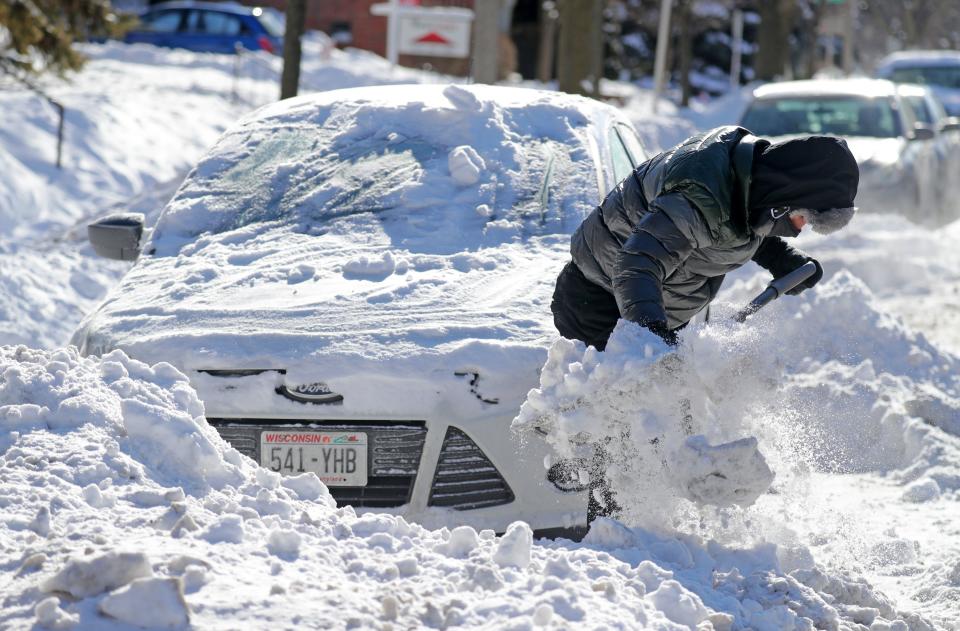Who pays if the cold weather from the polar vortex damages your home or car?
As millions of households emerge from sub-arctic temperatures spun from the polar vortex, many people may find their property hasn’t come through unscathed.
Busted pipes, cracked windows, damage from fallen branches, roof collapse and ice damming are among the many types of house damage caused by extreme cold, ice and snow.
The good news is that your homeowner’s insurance will include most winter-related damage to your home, according to Jim Whittle, chief claims counsel at American Property Casualty Insurance Association (APCIA), an industry trade group.

Any damage to your car depends on what type of coverage you carry. And renters are at the mercy of their landlord’s insurer for any damage done to the structure of their rental property.
Here’s how it shakes out:
Polar vortex tips: Extreme cold: Why your house is popping and how to prevent your windows from cracking
Homeowner’s insurance
As long as there are no signs of “obvious neglect,” homeowner’s insurance has you covered for most winter-event damages, says Whittle. It still helps to try to prevent them in the first place.
When it comes to burst frozen pipes, a common cold-weather occurrence, it’s possible your insurance covers only the damage but not the replacement of the actual pipe, Whittle says. Your insurer may also require proof that you took steps to prevent those freezing pipes, according to the Insurance Information Institute.
If you have any extra-valuable items in your home – such as an expensive piece of art – you may need a rider or endorsement to cover the additional cost of replacing that item.
Auto insurance
While 49 out of the 50 states require auto liability coverage, many states don’t require comprehensive or collision insurance, the two types of coverage that will help pay for winter-related damage to your car.
Winter and your car: How often should I start my car and let it idle in cold weather? Answer: Don't.
Comprehensive coverage comes in handy if an icy tree branch cracks the windshield of your car, while collision takes care of your car’s damage if it skids off an icy road into a ditch. Most leased cars and those financed by a loan require both types of coverage, but check your policy to make sure.
It also helps to take extra steps to protect your car from the cold, too.
Renter’s insurance
Renter’s insurance largely covers three areas, Whittle says. “It’s about liability if someone slips and falls on property, it’s the contents and the inside of property,” he says. That means your renter’s insurance may cover the replacement of sheet rock inside your apartment, but structural damage is paid by the landlord’s insurance.
What to do
If your property sustains damage during the polar vortex, act quickly. Snap photos of the damage and start a claims process right away, either by calling your insurer filing one online or by mobile app.
“In events like these there will be lots of people in your situation,” Whittle says. So, you want to get your claim in early.
Take steps to prevent further damage. For instance, cover broken windows or holes in the roof with tarps to keep moisture from coming inside. Don’t start any work until the damage has been inspected by your insurer or you’ve received the green light to do so from them. Above all, be safe, Whittle says.
“You don’t need to take a blow torch to the iced over gutters because you think it’s a problem. We’ve seen people do this,” he says. “They think they’re engaging in self-help, but then they end up setting their house on fire.”
This article originally appeared on USA TODAY: Who pays if the cold weather from the polar vortex damages your home or car?
